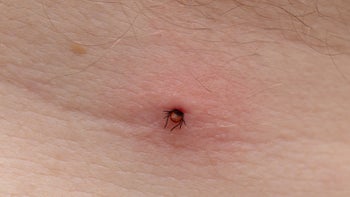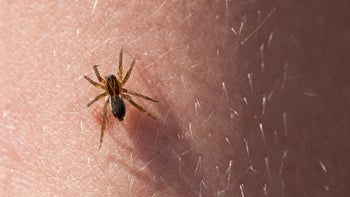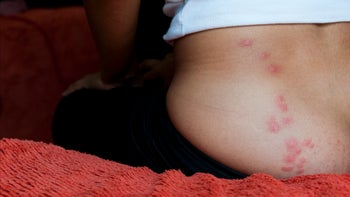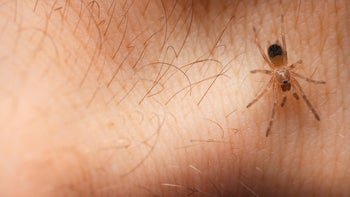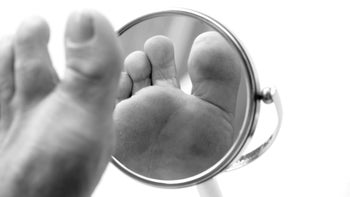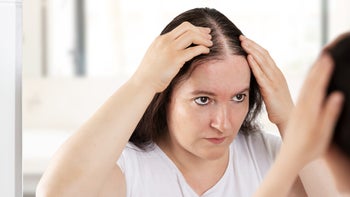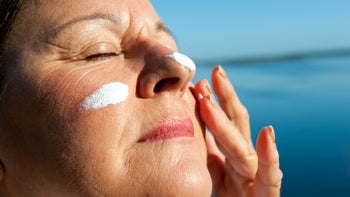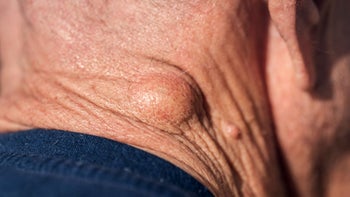
8 Treatments That Work on Wrinkles: Tretinoin, Lasers, and More
Key takeaways:
There are many effective ways to treat wrinkles and sun damage, including prescription creams, injections, and lasers.
Sun protection is the best way to prevent wrinkles and photoaging, and it’s never too late to start.
Which treatment you choose depends on different factors, like what you’re treating and how much it costs.
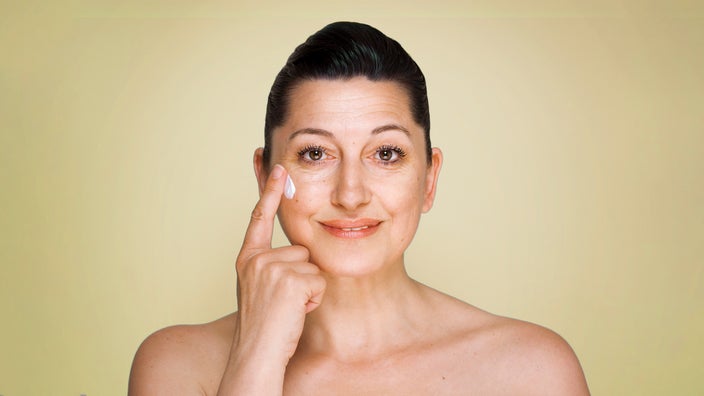
Photoaging is the term for skin changes that occur with sun and age. You know this as the fine and coarse wrinkles, brown spots, mottled pigmentation, and signs of loss of elasticity that appear as we get older. Every year, consumers spend thousands of dollars on wrinkle treatments like lasers, peels, and topicals like tretinoin. But how effective are these interventions?
While sun protection is the best way to prevent or improve photoaging, some of these other options are indeed effective. Many advertised wrinkle treatments have never been tested or been shown to be effective, so you should avoid those. But here are seven things that actually work.
1. Topical tretinoin
Tretinoin comes in a topical retinoid form, which is available by prescription. It is related to vitamin A and is a mainstay of therapy, or treatment, for mild to severe wrinkles and sun damage. Common brand-name versions are:
Search and compare options
These are generally used at night, and several months of treatment are required before real improvement can be seen. Tretinoin medications come in creams and gels of different strengths. The generic form of Retin-A (tretinoin) may be your cheapest option.
Higher strengths of tretinoin may get you faster results, but they can also irritate your skin more. In general, it’s a good idea to start with a lower strength (like 0.025% or 0.05%) to see how you do before going higher.
Tretinoin may be a better choice than Botox for many people, because it is less expensive, doesn’t involve needles, and can last longer. More on Botox below.
2. Tazorac (tazarotene)
Tazarotene (Tazorac, Avage) is another type of retinoid that also comes in a cream or a gel, but is usually more expensive than tretinoin. In studies, it is as effective as tretinoin for photoaging and wrinkles but can cause more skin irritation. Because of this and the higher cost, tazarotene isn’t usually recommended as the first-choice anti-aging cream.
3. Differin (adapalene)
Differin (adapalene) is another retinoid and is mainly used to treat acne. It’s now available over-the-counter, meaning without a doctor’s prescription. While there isn’t as much research on Differin, some studies show that it can improve signs of sun damage. It may be a good option for some people, because it’s pretty gentle on the skin and is often cheaper than other retinoids.
4. Efudex
Efudex (topical fluorouracil) is usually used to treat skin cancer, but it can also help improve sun-damaged skin. It does this by causing skin injury, wound healing, and then remodeling of the dermis (lower layers of the skin), which results in improved appearance. The warning here is that it produces a pretty intense skin reaction that involves redness, blistering, and peeling.
Read more like this
Explore these related articles, suggested for readers like you.
5. Chemical peels
These peels involve applying chemical substances to remove the top layers of skin, where there are signs of sun damage. The new skin that grows in is healthier and smoother. Chemical peels come in different strengths and types, to treat different degrees of sun damage.
Common ingredients in chemical peels for sun damage include:
Salicylic acid
Glycolic acid
Trichloroacetic acid
Pyruvic acid
Many chemical peels are done in your provider’s office, but there are also some at-home options. At-home peels use the same active ingredients — like glycolic or salicylic acid — but in lower concentrations, meaning they are less likely to be irritating. At-home chemical peels aren’t as effective as in-office peels, but they are budget-friendly and a great way to brighten your skin and improve signs of sun damage.
In-office chemical peels are not covered by insurance, and you may need to get more than one treatment. For best results, it’s important to see a provider with specialized training in the skin and doing chemical peels.
6. Sun protection
The best treatment for deep wrinkles is prevention, and that means ultraviolet (UV) protection. Using sunscreen is one great way to protect yourself from the sun. But here is something you might not know: Clothing is also an effective tool for sun protection and certain types are more protective than others.
Clothing with these qualities block more UV rays:
Synthetic fabric (even polyester)
Tightly woven material
Thicker fabric
Darker colors
Wearing hats, sunglasses with UV protection, and avoiding the midday sun are other ways to protect yourself. If you spend a lot of time in front of screens, a tinted sunscreen can help protect you from skin damage caused by blue (visible) light.
7. Botox
Botox is an injectable medication used to treat wrinkles that develop from different facial expressions, such as frown lines between the eyebrows. It’s made from botulinum toxin, which is a chemical produced by the bacteria Clostridium botulinum. (This is the same toxin that can cause a rare but dangerous infection called botulism). It is safe to use for cosmetic purposes in small doses and in targeted areas.
Other brand-name medications that contain botulinum toxin include:
Botox and these similar medications are injected into specific muscles in your face or neck, where they block nerves. This temporarily keeps those muscles from contracting, which helps smooth out existing wrinkles and keeps new ones from forming. Results usually last at least 3 to 4 months.
Side effects with these medications are rare. When they do happen, it’s usually from the actual injection, resulting in bruising or redness around the site. More serious side effects, like a droopy eyelid or difficulty breathing, are very rare. These treatments are not covered by insurance and can be quite expensive.
8. Laser treatments
Different laser treatments can treat different signs of sun-damaged skin, like wrinkles, brown spots, and loss of skin tone. Lasers work in different ways: Some remove the top layers of the skin, while others don’t. These are called ablative and non-ablative.
Many lasers also stimulate the deeper layers of the skin to encourage collagen production, which improves texture.
Which laser you use depends on what you’re having treated and how significant your skin changes are. Here are some examples of common lasers and what they’re used to treat:
Fractional lasers: These lasers treat a range of symptoms — depending on the type — including skin discoloration, wrinkles, and loss of skin tone.
Pulsed dye lasers (PDL): These help reduce redness and broken capillaries.
Erbium (Er:YAG) lasers: These can help treat fine lines and wrinkles, as well as loss of skin tone.
Intense pulsed light (IPL): This isn’t technically a laser, but it is commonly used to treat sun damage and dark spots.
Laser treatments for sun damage aren’t covered by insurance, and the cost can add up since several treatments are usually needed. Keep in mind that you may need 2 to 3 weeks of downtime to heal, depending on which treatment you get. No matter what you decide, it’s important to see a provider trained in using lasers.
What is the best treatment for wrinkles?
In general, the best bang for your buck is prevention. Protecting your skin from harmful UV rays is the best way to minimize sun damage. Remember: It’s never too early or too late to start protecting your skin.
As for existing wrinkles, the best treatment depends on many factors. These include things like what’s being treated, how much it costs, and how much downtime is needed to recover. Talk to a provider who specializes in cosmetic procedures to help you decide the best option for you.
The bottom line
As you get older, sun damage causes many changes to your skin, including wrinkles and discoloration. There are many effective ways to treat these changes, including prescription creams, injections, and lasers. Some treatments don’t require any downtime, while other procedures may require a few weeks of recovery. These treatments are not covered by insurance, so cost may be a limiting factor. No matter what you decide, sun protection is an important way to prevent photoaging, and it’s never too late to start.
Why trust our experts?


References
American Academy of Dermatology Association. (n.d.). Chemical peels: Overview.
American Board of Cosmetic Surgery. (2021). Laser skin resurfacing: Top 8 things you need to know.
Geisler, A. N., et al. (2021). Visible light part II. Photoprotection against visible and ultraviolet light. Journal of the American Academy of Dermatology.
Mukherjee, S., et al. (2006). Retinoids in the treatment of skin aging: An overview of clinical efficacy and safety. Clinical Interventions in Aging.
Sachs, D. L., et al. (2009). Topical fluorouracil for actinic keratoses and photoaging: A clinical and molecular analysis. JAMA Dermatology.
Skin Cancer Foundation. (2019). Sun-protective clothing.
Soleymani, T., et al. (2018). A practical approach to chemical peels. The Journal of Clinical and Aesthetic Dermatology.







